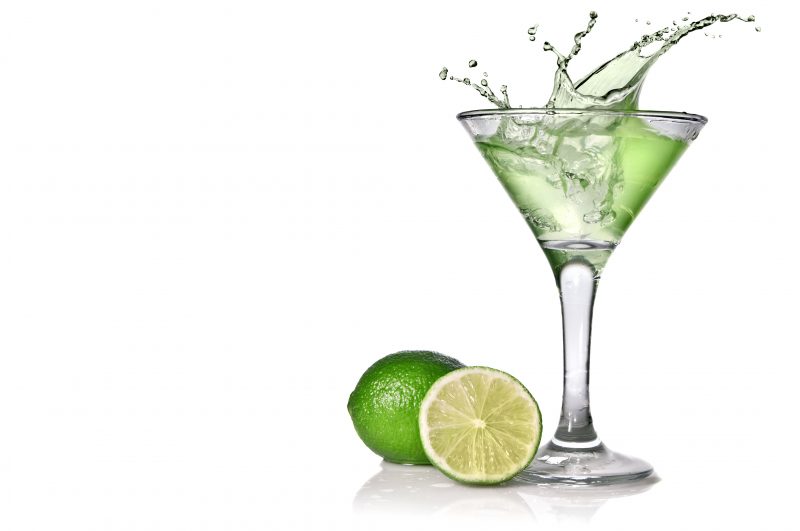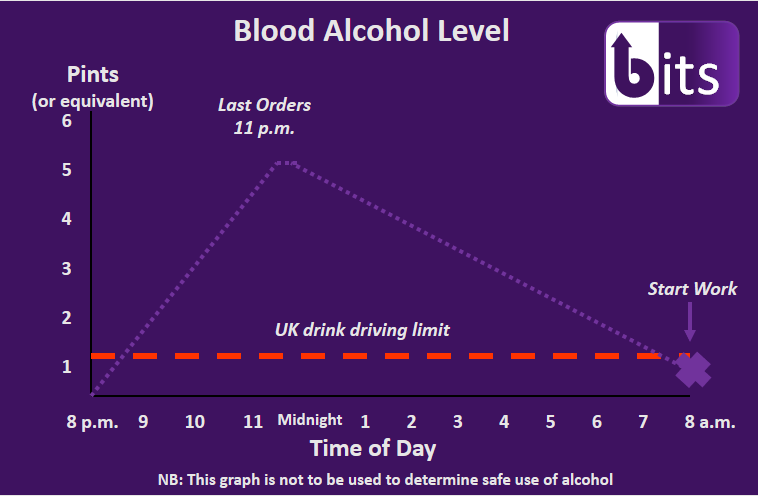Raising a glass may well help you relax, raising a few may effect your career and immediate safety.
 Many of us like a drink on a Friday, however, what about the next day? What is the effect of that drink and how might a midweek drink effect our work? You may have read, in the news, about the case of Kirsty Gallacher. She pleaded guilty to drink driving. Read the headline and you might think, why does a celebrity drink then drive, why not get a taxi, they can afford it! Then you look at the detail. She met a friend for a drink after work. Going through a tricky divorce, she was under a lot of stress, so she relaxes into an evening with her friend. They have one drink after another and then before you know it, it is 2am. The night had taken an unplanned turn, so she got a taxi home and left her car in the car park.
Many of us like a drink on a Friday, however, what about the next day? What is the effect of that drink and how might a midweek drink effect our work? You may have read, in the news, about the case of Kirsty Gallacher. She pleaded guilty to drink driving. Read the headline and you might think, why does a celebrity drink then drive, why not get a taxi, they can afford it! Then you look at the detail. She met a friend for a drink after work. Going through a tricky divorce, she was under a lot of stress, so she relaxes into an evening with her friend. They have one drink after another and then before you know it, it is 2am. The night had taken an unplanned turn, so she got a taxi home and left her car in the car park.
All very responsible so far, and not the actions of someone who doesn’t hold regard for the law and safety. The following morning, having slept off the night before, she goes to collect her car at 11am. She then heads to meet her children when her driving is described as erratic by witnesses. The police track down her car and she is breathalysed. She is found to be around three times the legal limit for driving.
No one is saying that this set of circumstances devolves Kirsty of responsibility. Neither does it lessen the criminality of the act. However, how many reading this wonder whether they have driven in similar circumstances, but maybe got away with it?
Enjoying a drink is one thing, but breaking the law the next day and putting people at risk is another. So how do we avoid the same fate? A little knowledge goes a long way. Understanding a little more about how the body metabolises alcohol can help us plan our behaviour to avoid this risk. The good news is, that most people metabolise alcohol at around the same rate. So whether you are a light weight or have hollow legs, you tend to burn off the booze at the same rate. This rate is 0.016BAC per hour for most people. The way we vary in this regard is that our blood alcohol level increases at different rates depending on our size, hydration and stomach contents. So in short, we all take a different number of drinks to get drunk, but once drunk, it takes us all the same amount of time to sober up, in general.
The following graph attempts to present this in very simple terms. Remember, this is just a guide and is based on an average sized male.

Please note the drink drive limit is 0.08% Blood Alcohol Content, so the graph is only an approximation as this varies between people.
What the graph tells us is, if you have 5 pints of beer or medium glasses of wine in a night, starting at 8pm and ordering your last drink at 11pm. You will not be below the drink drive limit until around 8am the following morning. So if you start work at 8am, you may well be over the limit for your drive to work. You wouldn’t just be risking prosecution, you are risking lives. Your judgement and ability to drive is as impaired the next day as the night before. You may feel different on the way down, but you are as unfit to drive as on the way up.
Remember this graph is based on an average sized male. If you are smaller, your blood alcohol content will increase with less drinks and you will reach the top of the graph with less units. Watch out for what you are dinking. We used to safely assume that a shot of spirits was one unit and a pint of beer or glass of wine was two. However, white wine is generally weaker, a 175ml glass of white wine at 11%ABV is 1.9 units, the same sized glass of red at 14%ABV is 2.4 units. Likewise, the popular craft ales and premium lagers can be between 4.8-6.7%ABV, this represents a big difference. The numbers can get confusing, so that is why manufacturers print units on their products. In the main, one unit takes 1 hour to metabolise. So know your units and watch how many you consume.
What does this have to do with safety in the workplace?
While a useful public information notice, why is this information being published here? The truth is, the long unspoken truth, that alcohol consumption and indeed drug use is the cause of many work related incidents. For years this seemed to be a taboo subject. In the 1980s it was not uncommon for large factories and process plants to have a bar on the premises with no restriction on drinks consumed. People would drink with lunch then go back to working on a chemical plant or at a hot furnace.
In the main, daytime drinking at work is now uncommon, however, arriving in the morning while still under the influence of drugs or alcohol is still dangerously frequent. While for many companies drug and alcohol testing is commonplace, for many others it is not. This means that accidents occur, where intoxication is the root cause or major contributory factor and we are not aware of this critical fact.
There has long been fear associated with testing workers; maybe they would refuse, maybe the unions would step in or maybe we are over stepping the duty of care of an employer. In truth unions are supportive of drug and alcohol testing as it protects their members, such tests protect workers and ensure they arrive fit for work. Any suggestion that employers are dictating how we should enjoy our free time are countered by the employer’s duty and indeed the employee’s duty to protect the health and safety of workers. So please forget the bravado and ‘work hard, play hard’ mentality and ensure you have measures in place to prevent a drug or alcohol related accident in your workplace. Here are some useful bullets to help you:
- Educate your team on the effects of alcohol and the natural metabolic rate.
- Talk about drinking and drug use in the workplace, get people comfortable with the topic.
- Introduce random drug and alcohol testing for your team and visiting contractors.
- Ensure such testing includes everyone including directors, managers and the CEO.
- Perform drug and alcohol testing immediately following serious incidents.
- Notify everyone on site of with-cause testing. If you act or smell drunk, you will be tested.
- Organise work social events on a Friday or day when people will not be required to work in the morning.
- Encourage sensible drinking on nights out.
- Issue your team with a personal breathalyser for that morning after or out of hours call-in.
- Ensure a support mechanism is in place for anyone who might be experiencing issues around this subject.
- Have a policy that covers all this and provide it to your visiting contractors as well as your team.
Don’t be afraid to talk about these issues in the workplace, engage your team in developing your process as this isn’t a policing system, it is a safety system to protect your workers. Our reluctance to address this issue for decades has no doubt resulted in countless accidents, the recent story of Kirsty Gallacher reminds us how we can unwittingly influence our performance the day after a drink. Like everything, just raising awareness and talking about this issue will itself reduce the risks we face.
